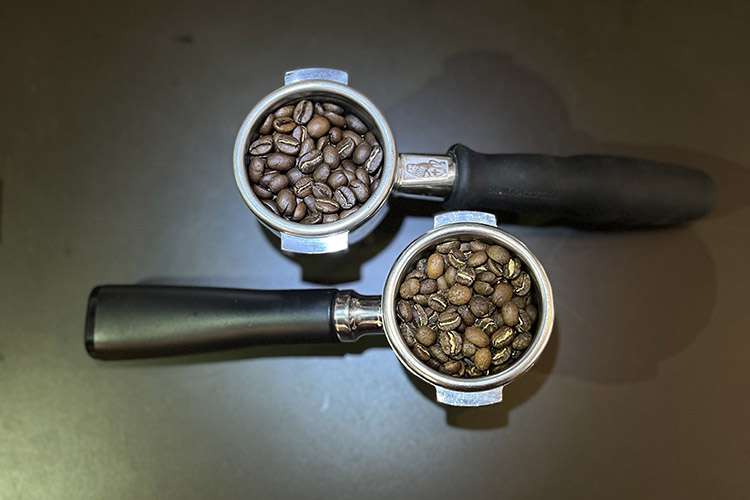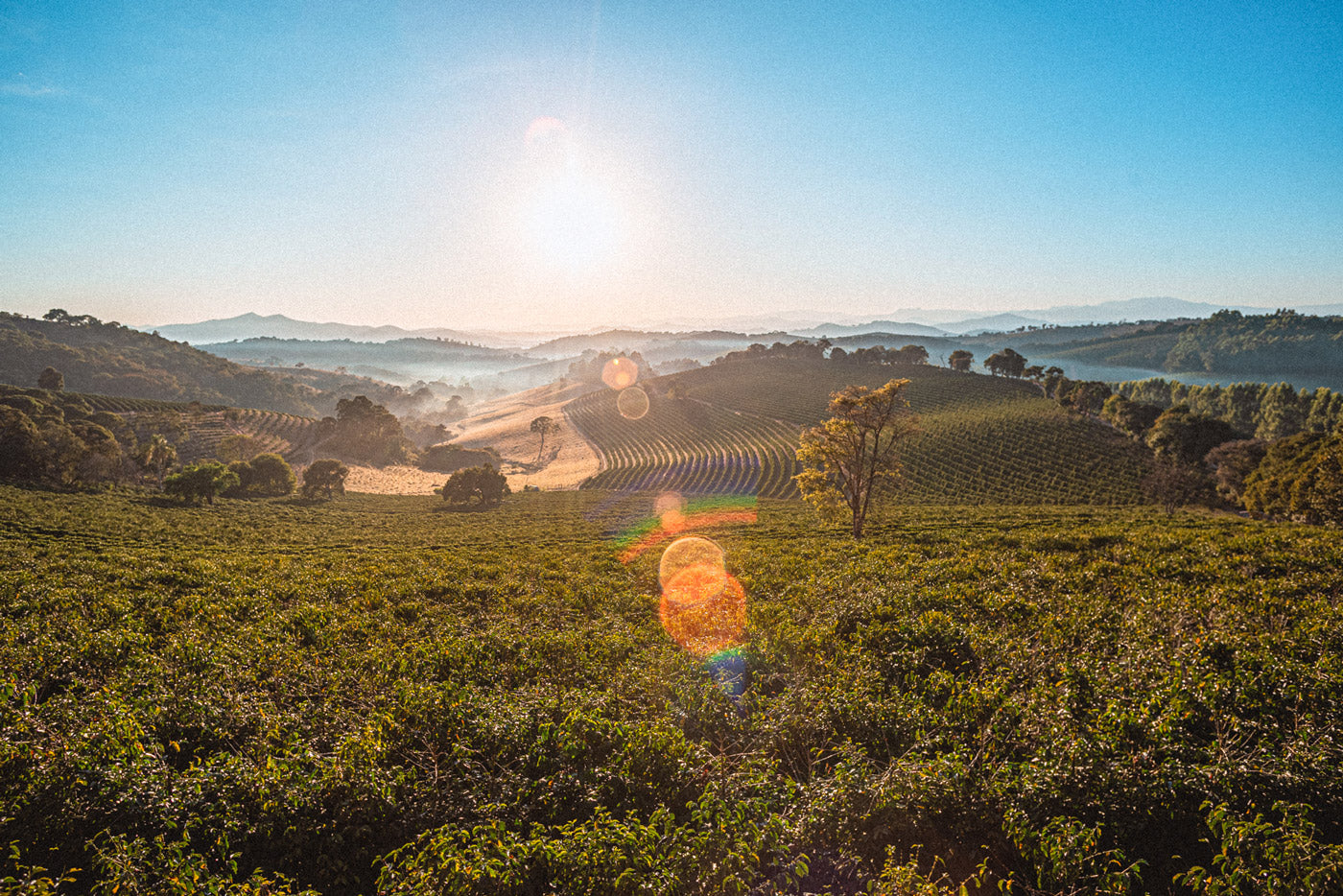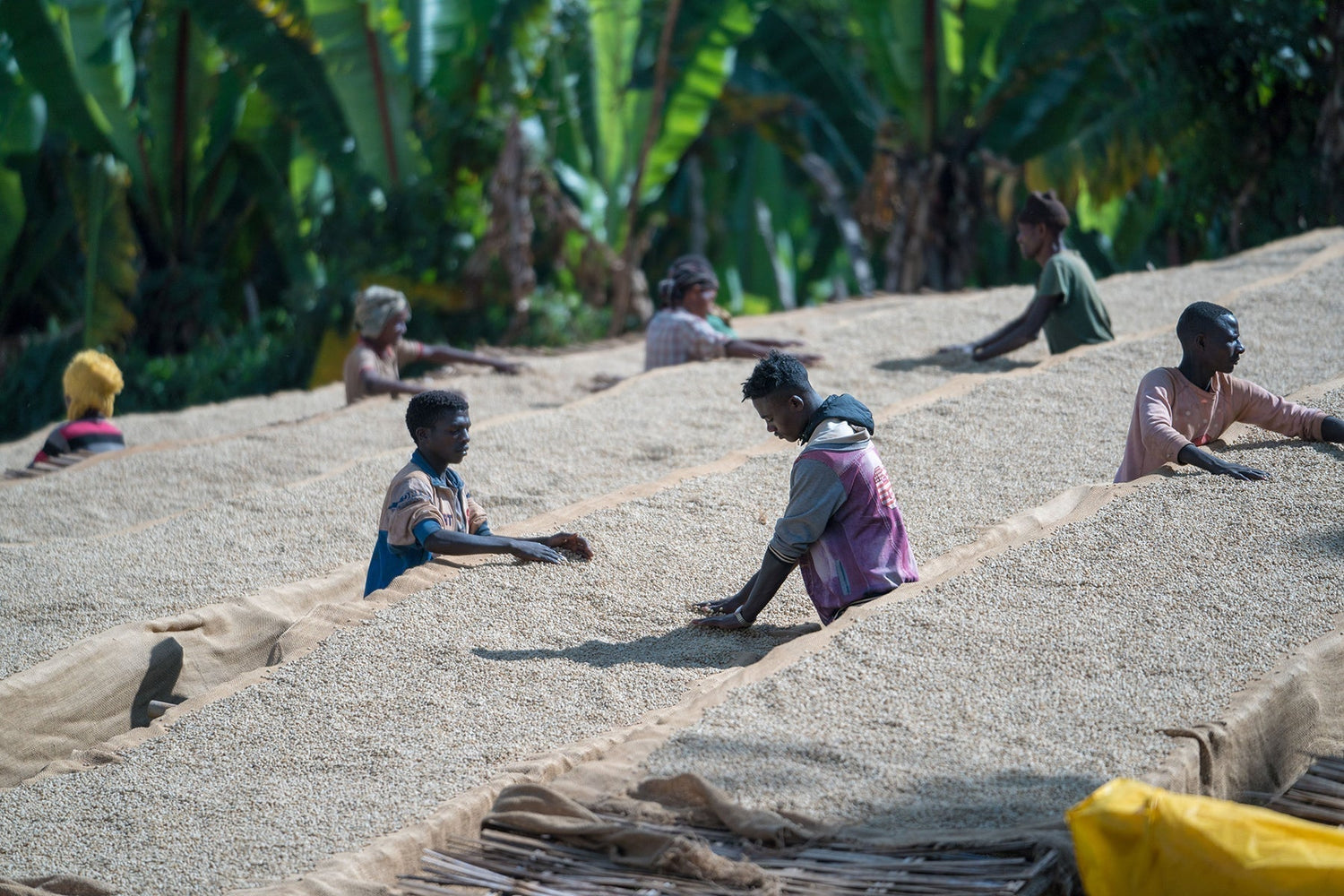Roasting levels are crucial for the quality and taste of the coffee . There are generally three main types of roasting levels: light, medium and dark. Each roasting level gives, or rather emphasizes, the coffee different aromas and properties . This is especially true for the roasting level for the portafilter. Up until now, people have been used to using dark to very dark roasts. But there are other options... this came about mainly as a result of the Third Coffee Wave. We'll take a look at the roasting level for the portafilter and what we might understand by Third Wave Espresso.
Roasting level for the portafilter – What types of roasts are there?
The rough distinction between roasts is light, medium and dark. Of course, there are also finer gradations within these three groups. They all have exciting names such as City Roast, Cinnamon Roast, New England Roast or Italian Roast etc.
Roasting level for the portafilter – differences
Light roasts preserve the original aromas and acids of the coffee beans , while medium roasts offer a more balanced taste with slightly sweet notes. Medium roasts have a stronger flavor and are already very nutty and chocolaty . Dark roasts have deep, caramel flavors and - depending on how dark they are roasted - often develop a strong, bitter taste. It should also be said here, however, that the terms light, medium and dark are understood and implemented differently by each roaster and roasting company. Our dark roasts, for example, are also a little lighter than others ; after all, it should still taste of the aromas present in the coffee.
Roasting level for the portafilter – which one is suitable?
Roast level is crucial when choosing a brewing method , as different roast levels simply lend themselves to certain brewing methods and not so well to others. For example , lighter roasts work well for filter coffee and manual brewing methods , while darker roasts are often preferred for espresso and French press. Choosing the right roast level can make the difference between a flavorful cup of coffee and a disappointing experience.
Medium-dark to dark roasts are best for making espresso with a portafilter . These roasts offer a balanced blend of flavor and body that is ideal for extracting a strong and aromatic espresso. The longer roasting time for medium-dark to dark roasts creates rich and deep flavors that harmonize well with the intense extraction of the espresso.
Another advantage of medium to dark roasts for the portafilter is their ability to hold their own against milk. When the espresso is used as a base for milk-based drinks such as cappuccinos or latte, the bold flavors and rich texture of the darker roasts help to ensure that the coffee is not overwhelmed by the milk, creating a balanced taste experience.

Roasting for the portafilter – Third Wave Espresso
Well, the thing about darker roasts for espresso is basically true and is practiced that way in most cases. But the Third Coffee Wave wouldn't be what it is if people didn't experiment with espresso. The third coffee wave is basically about sustainability and knowing the exact origin of the coffee. But since coffee has become not just a consumption, but also a pleasure, the Third Wave Espresso has somehow come about. You could say that this is an espresso that is not necessarily made with a darker roast.
Roasting level for the portafilter – medium roast
If you put a medium roast in the portafilter and pull an espresso, the result will likely be different than with a darker roast. A medium roast is characterized by a balanced mix of acidity, sweetness and flavors , while the natural characteristics of the coffee beans are still clearly evident. Compared to darker roasts , medium roasts tend to have a lighter body and less bitterness. The espresso extracted from a medium roast will therefore be lighter in color and have a lighter texture. The flavors can be more fruity or floral and have more subtle nuances .
Roasting level for the portafilter – light roast
If you come up with the idea of making yourself an espresso from a light roast , you'll get an espresso experience that 's quite different from that of a darker roast. Light roasts retain the original flavors and acids of the coffee beans best. In the case of espresso, this means that the flavor can be more fruity, floral, or even grassy , depending on the specific characteristics of the coffee variety. Light roasts often have a lighter body and less bitterness than darker roasts. The espresso made from a light roast will be lighter in color and have a more vibrant acidity. The flavors might be more subtle and complex, with notes of citrus, floral, or even herbal.
Roasting level for the portafilter – there are changes
If you use a different roast level for the portafilter, keep in mind that the coffee beans will have different characteristics due to the shorter roasting time and lower temperature. Because light roasts spend less time in the roaster, they tend to be denser and harder than darker roasts. This can lead to a slower extraction, which means you may need to use a finer grind to achieve adequate flow. You can experiment a bit here, but since dark roasts are already finely ground, you can only go towards very fine.
The changes in taste that you can expect are an increase in fruitiness with livelier acids and a multi-layered, but also more complex aroma. The right roasting level does not exist, there are personal preferences and you always have to find them out for yourself. But I would also never categorically rule out the possibility that an espresso from a light roast might not taste good . Try it out!
Roasting level for the portafilter – comparison
| Light roast | Medium roast | Dark roast | |
|---|---|---|---|
| Aroma |
complex aromas of |
balanced flavors, subtle notes of Fruits and flowers |
limited, intensive, Chocolate, Nut, caramel |
| The taste | lively, fruity, subtle Sweet, floral and spicy notes |
balanced, sweet, some acidity, slight bitterness |
strong, more bitterness, |
| acid | high acidity | moderate acidity | little to no acid |
| Body | light and lively, clear Texture, refreshing mouthfeel |
medium weight and silky, pleasant texture |
heavy, oily, full-bodied, velvety |
Roasting level for the portafilter – Conclusion
Each roast level offers different advantages and disadvantages for the portafilter. What they have in common is that they all taste good as espresso and you can also make a good cappuccino or latte from all of them. Which roast level you prefer for the portafilter is always a matter of individual preference. It is definitely worth trying out different roasts to find your personal favorite and enjoy the variety of coffee. Because as (many) of our mothers used to say: "If you haven't tried it, how do you know you don't like it!" I think they were absolutely right, even if I could never get my mother to try a light roast. You can!
#staywild and have fun making espresso


